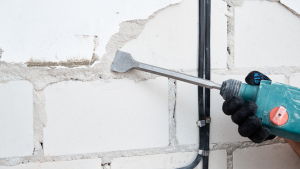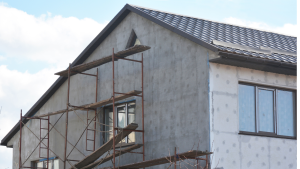Roof care is often overlooked in favor of yard work and spring cleaning. However, when winter comes to a close, your roof should be at the top of your list of home repair needs.
Winter weather may do significant damage to your roof, and if the damage is serious enough, it may jeopardize structural stability. If you want your roof to last through the winter, you need take care of it after that.
Here are seven roof care ideas to help you get through the winter and prepare your roof for spring.
1. Have Your Roof Evaluated
After winter, you should first have a professional roofer inspect your roof for damage. While you can inspect your roof, it may contain subtle deterioration symptoms that an inexperienced eye might miss. Furthermore, rooftops are damp and slippery after winter, making climbing on the roof perilous.
To be on the safe side, have someone with expertise evaluate your roof and list all the required repairs.
2. Check for Interior Signs of Water Damage
Water damage to your roof might be difficult to see from the outside. However, your interiors may exhibit symptoms of water damage. Examine your ceiling for water spots. These may appear as brown ring-like stains. Additionally, keep an eye out for peeling or bubbling paint on your walls.
Have your contractor make repairs as soon as you see any evidence of water damage.
3. Clean Your Gutters
Cleaning your gutters is vital for preventative maintenance before spring. Throughout the winter, debris may have blocked your gutters, making it hard for them to discharge water. You don’t want all that debris in your gutters throughout the spring.
If your gutters get blocked during the spring rains, water will stand on your roof or overflow, causing structural damage to your property. To avoid additional obstruction, you may wish to install a gutter guard.
4. Check for Mold and Algae
During the winter, the moisture on your roof creates an excellent habitat for mold and algae development. Mold and algae may damage your roof and risk your health if left untreated. If you see mold or algae on your roof, remove it completely.
5. Trim Your Trees
During rainstorms, overhanging branches may break and fall on your roof and drop leaves and debris. If this occurs, your roof may experience significant damage. Furthermore, leaves shed on your roof may contain moisture, which may damage your roof and cause mold development.
6. Replace or Repair Damaged Shingles
Water leaks are caused by damaged shingles, and with the spring rains, you want to avoid constantly wiping pools of water off your floor. Water leaks may also cause damage to your home’s ceiling, attic, and walls. Damaged shingles also expose your roof’s protective membrane to harm, reducing its insulative capabilities.
To prevent the concerns mentioned above, have your professional roofing repair or replace broken shingles before spring.
7. Examine Your Fascia Board and Flashing
The fascia is the wooden or metal board that runs down the bottom ends of your roof, hiding exposed trusses and rafters. Flashing, on the other hand, is a thin metal material used on roof connections such as places between the roof, chimneys, and roof valleys.
The flashing and fascia prevent water from entering your home via holes in the roof therefore, if they are damaged, they must be repaired immediately to prevent water leaks into your home.
Preventative roof care is essential for prolonging the life of your roof and safeguarding your property. CMB Jersey City Stucco & EIFS Repair Enterprises immediately for post-winter repairs and maintenance services to keep your roof in excellent condition as spring approaches.




